
Would you like to know how to track third-party domain request in WordPress? Visitors may quit your website before it even gets a chance to load if it is slow. The loading times of your pages can still be significantly impacted by third-party domain requests even if you’ve optimized every aspect of your website.
This post will demonstrate how to track requests from third-party domains in WordPress.
Why Does WordPress Track Third-Party Domain Requests?
You may enhance user experience, attract more visitors, and increase WordPress SEO by speeding up your pages. Your website can be speed up in a variety of ways, including by choosing the finest WordPress hosting and image optimization.
Even with the finest hosting and optimization, third-party domain requests can still negatively impact the performance of your website.
A third-party domain request pulls resources or material from a website that is not under your control. Content from social networking platforms like Twitter and Facebook, advertising networks like Google AdSense, and even some WordPress comment plugins are a few examples that are frequently used.
Your website may become sluggish if a lot of requests come from other domains. However, occasionally even a single request from a third party can prevent the remainder of the page from loading. When this occurs, WordPress will establish a connection to the external URL and download all necessary files before loading the remaining portions of your page.
Let’s now look at how tracking and refining third-party domain requests in WordPress can help you speed up your website.
How to Identify Third-Party Domain Requests in WordPress
The first step is to find all the third-party domain queries that your site is making. Pingdom is a well-liked performance tracking tool that enables you to keep track of the uptime of your WordPress server. It can also display each third-party domain request made to your website.
Your domain name must be entered into the ‘URL’ section on the Pingdom website first. Next, select “Start Test.”
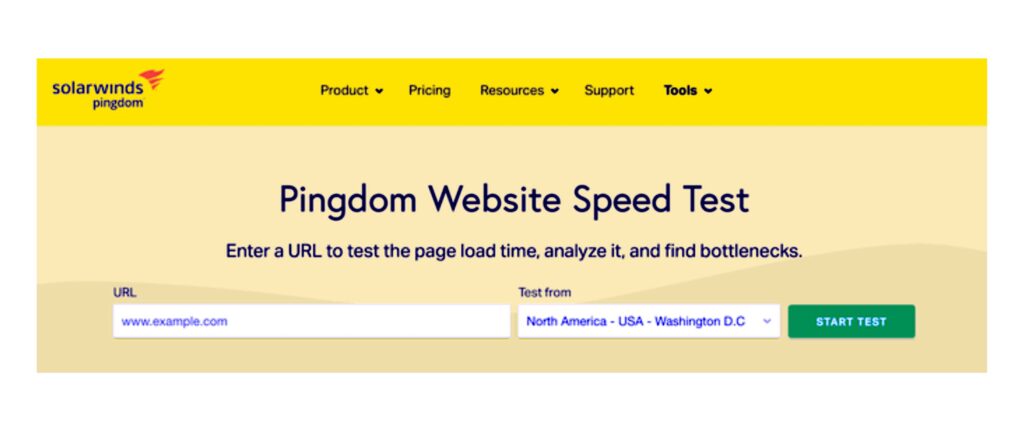
Pingdom will display a breakdown of your site’s performance after a short while. Scroll to the ‘File Requests’ section to see all the requests from third parties.
Each request’s content type, URL, and size are displayed here.
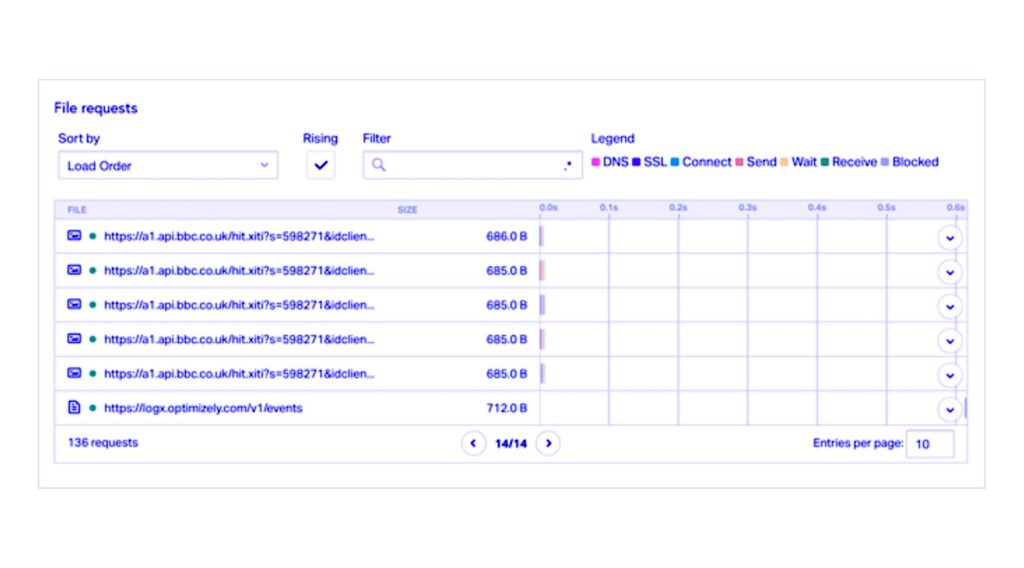
Simply check for any items that don’t begin with the domain name of your site to identify the third-party requests.
Simply place your cursor over a request’s bar in the waterfall chart to see more information about it.
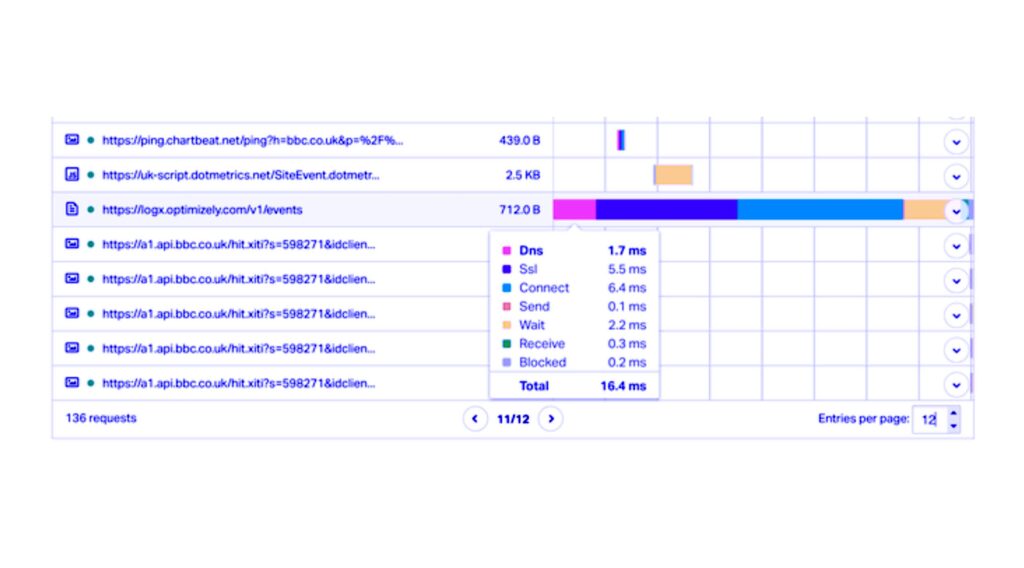
Here, you can see all the actions WordPress takes to download data from this third-party domain, including doing a DNS lookup and an SSL handshake.
Pingdom also displays how long each process takes, allowing you to pinpoint the domain queries that have the most influence on the speed of your website.
Simply type a third-party service’s URL into a search engine like Google if you aren’t familiar with it. This frequently displays connections to articles, forums, and documentation where you may find additional information about the domain.
How to Improve Requests from Third-Party Domains
There are a few different strategies to optimize those queries and increase your WordPress speed once you’ve determined which third-party domain requests are negatively impacting the performance of your website.
Depending on how your WordPress website is configured, the requests it generates, and other variables, the approach that works best for you can change.
Abandon the Third-Party Domain Request
Although eliminating one or more third-party requests will significantly reduce your page loading speeds, this is not a good option for all WordPress blogs.
You might have accidentally added a domain request, or you might have changed course and found that a certain third-party request is no longer beneficial to your company.
For instance, you might have installed Google AdSense initially, but you might now profit more by selling WooCommerce products on your website. You might boost your store’s performance by getting rid of Google AdSense to the point where you acquire a lot more sales and earn a lot more money than if you continued to display online adverts.
There isn’t a simple fix for this that will apply to all websites. In light of this, you might want to experiment with deleting particular products and content from your website while monitoring the effects this has on crucial stats like your conversion rates.
It’s a good idea to back up your WordPress website in case you decide to delete features and plugins that make requests to third-party domains. This enables you to rapidly fix any faults on your website or just notice a mistake you made.
While making this modification, you might also wish to put your website into maintenance mode in case it malfunctions.
Depending on the request, different procedures must be followed to delete third-party domain requests.
However, you can frequently find thorough step-by-step instructions by searching Google or the documentation for the relevant service, plugin, or piece of software.
Remove WordPress Plugins That Are Not Necessary
The main factor behind WordPress’ enormous popularity is plugins. With the appropriate plugins, you may complete functionality gaps, increase built-in capabilities, and transform your WordPress blog into any kind of website.
Some WordPress plugins, however, send a lot of requests to third parties and may even cause your website to load slowly. It’s possible that you are completely ignorant of the existence of these requests.
In light of this, it’s a good idea to uninstall any plugins you no longer require by going to Plugins » Installed Plugins on the WordPress admin.
Even better, consider replacing several smaller WordPress plugins with a single one. For instance, there are a ton of SEO plugins and tools available, but AIOSEO is a comprehensive SEO toolkit that handles a ton of significant SEO duties.
Preconnect to Key Third-Party Domains
Another choice is to establish a connection with the external domain immediately after the page has begun to load. A browser can frequently download third-party content significantly more quickly when it reconnects to an external domain first.
Be mindful that reconnecting to an external URL uses resources that may be used to load other parts of your website. By delaying the remainder of your content in favour of the external resource, prioritizing it in this way could harm the user experience if it’s not essential.
You’ll need a list of all your third-party domain requests in order to use the pre-connect approach. If you haven’t already, you can obtain this information by utilizing Pingdom and the previously mentioned procedure.
Adding Custom Code
The next step is to add custom code to WordPress. Some guides will advise you to directly alter your theme files, but doing so can result in numerous typical WordPress issues. Additionally, updating your WordPress theme won’t allow you to retain customisation.
The greatest code snippets plugin is WPCode, which enables you to add unique CSS, PHP, HTML, and more without endangering your website. With the press of a button, you can also enable and disable your code snippets.
Installing and activating the free WPCode plugin is the first step. See our detailed instructions on installing a WordPress plugin for additional details.
Go to Code Snippets » Add Snippet after activating the plugin.
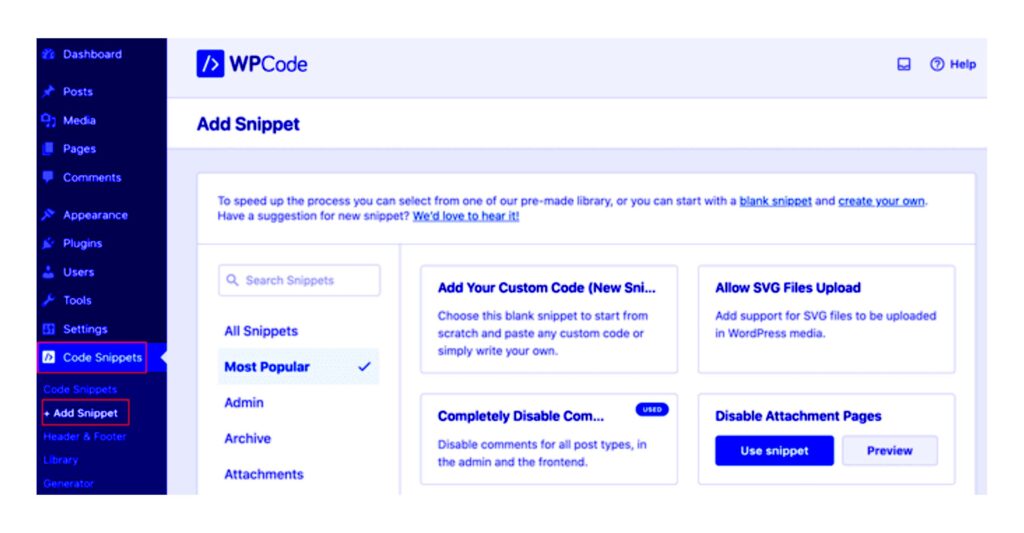
You can add any of the pre-written WPCode snippets you see here to your website. One of these snippets enables you to fully deactivate comments, upload file types that WordPress ordinarily does not support, disable attachment pages, and many other things.
To utilize the ‘utilize snippet’ button, just move your mouse pointer over the ‘Add Your Custom Code (New Snippet)’ option.
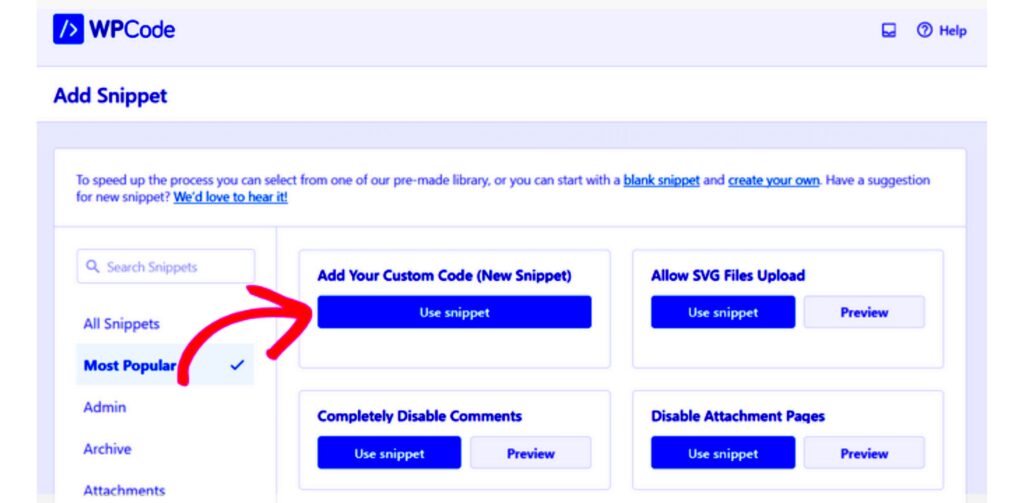
You must enter a title for the code snippet on the following screen. You can use anything you like because this is only for your reference.
Then, select “JavaScript Snippet” from the “Code Type” dropdown menu.
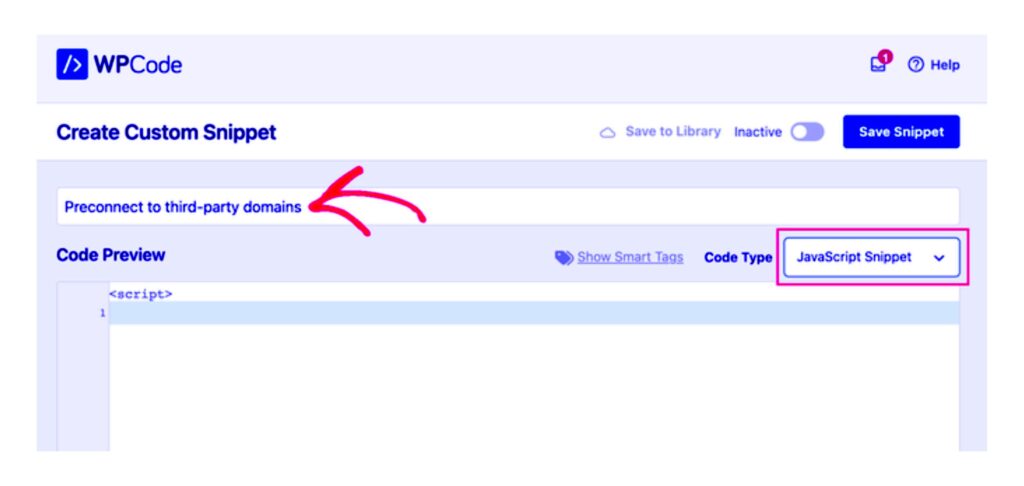
Once you’ve done that, WordPress is ready for you to add each domain it needs to reconnect to.
For instance, we reconnect to Google Fonts in the code snippet below.
| 1 | "preconnect" href="https://fonts.googleapis.com" crossorigin /> |
Simply add each external URL you want to use in the code editor.
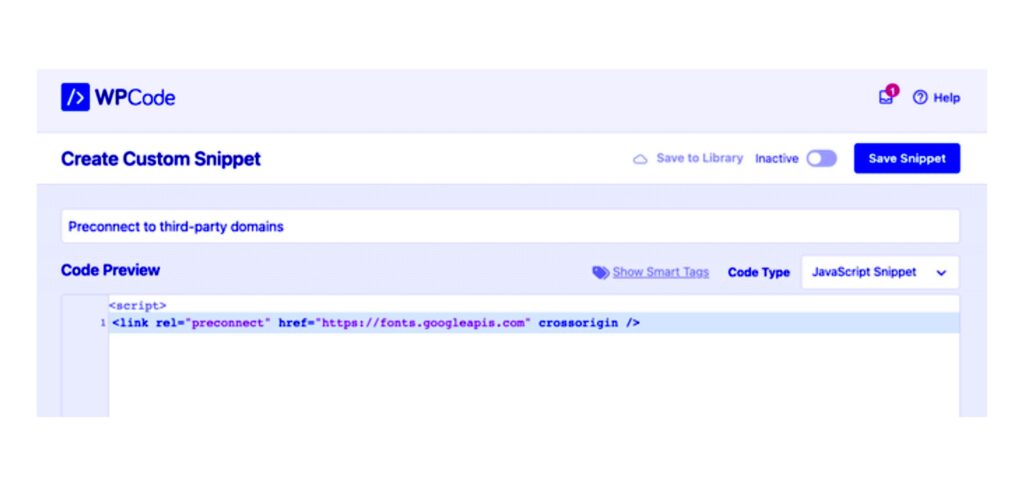
After completing that, scroll to the “Insertion” settings. ‘Auto Insert’ should be chosen here if it isn’t already.
Then select “Site Wide Header” from the “Location” dropdown menu after opening it.
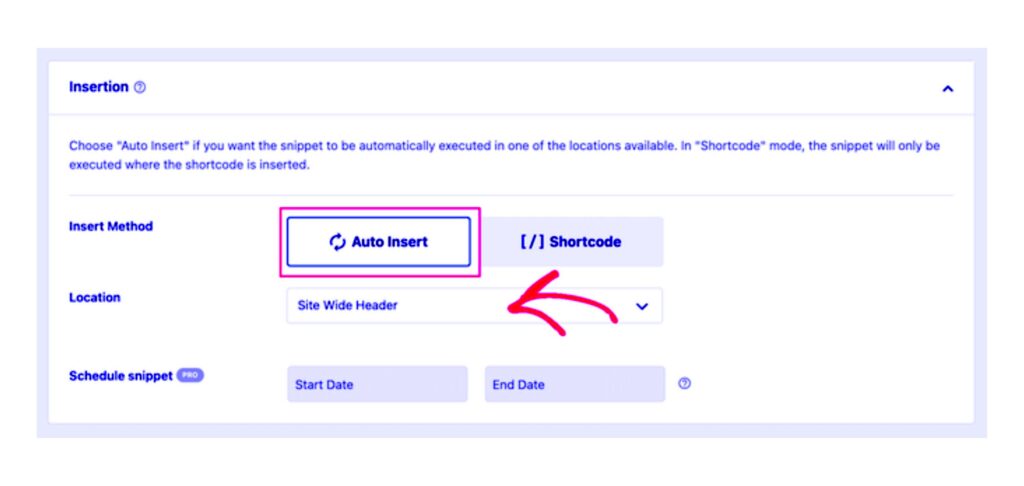
When you’re ready to publish the code snippet, navigate to the top of the page and click the ‘Inactive’ toggle so it switches to ‘Active.
then select the ‘Save Snippet’ button.
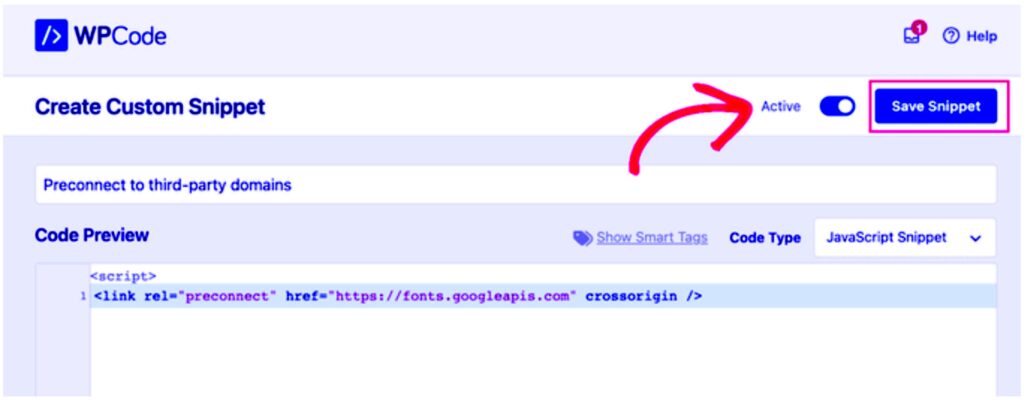
Use DNS Prefetching
When you use DNS prefetching, you can run a DNS lookup in the background before a visitor requests a resource or piece of linked content. This is helpful if your website uses third-party resources like Google Analytics, Google Fonts, or your WordPress Content Delivery Network (CDN) provider.
Simply use WPCode to build a new JavaScript snippet and adhere to the same procedure as above to employ DNS prefetching.
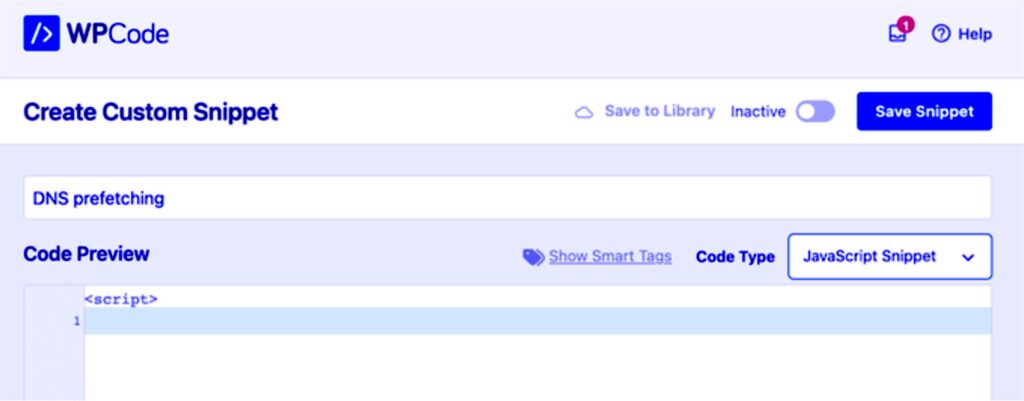
Once you’ve done that, add each domain name you wish to prefetch by using the format:
| 1 | "dns-prefetch" href="//fonts.googleapis.com"> |
Once you’ve entered this data, add the code to your site’s global header and then publish the code snippet.
Locally Host Resources
Preconnecting and prefetching enable you to make requests to third-party domains without degrading the user experience. However, you should make an effort to host resources and content locally whenever possible.
It is frequently quicker to retrieve content from a local server, and it is also simpler to enhance the performance of that content. You could, for instance, set up a CDN or utilize a cache plugin.
You can host content locally by using a variety of WordPress plugins and services. For instance, you can host local fonts in WordPress rather than loading them from a third party like Google Fonts if you wish to employ custom typography.
Similar to that, a plugin like SeedProd makes it simple to incorporate distinctive icon fonts into your WordPress theme.
Using MonsterInsights and the Performance Addon, you can host the gtag.js script locally on your own server if you use Google Ads, Google Analytics, Campaign Manager, or any other well-known free Google products.
You may frequently increase the efficiency of your website without sacrificing its features and content by substituting local resources for queries to external domains.
Employ Lazy Loading
Lazy loading simply downloads the content that can be seen on the user’s screen, as opposed to loading all of your stuff at once. Then, when the user scrolls down the screen, more content will load. This may give the impression that the page is loading more quickly.
WordPress automatically lazy loads images, but depending on where they are hosted, it may also be beneficial to lazily load material that is housed elsewhere. For instance, you can select a plugin with built-in lazy loading if you wish to embed YouTube videos in WordPress blog posts.
Other plugins, like Smash Balloon YouTube Feed, include built-in caching and delayed player loading. Even when you’re displaying material from other websites, this can reduce the apparent page load speeds.
We hope this post will be useful in teaching you how to track requests from third-party domains in WordPress.
Also Read: Adding Smart App Banners to WordPress Quickly
Also Read: How to Get Quick Comments on Your WordPress Articles
Also Read: How to Use WordPress to Host Online Events
Also Read: how to disable right-clicking on WordPress Website
I do consider all the ideas you have presented to your post.
They’re really convincing and can certainly work. Still, the
posts are too brief for starters. Could you please prolong them a bit from next time?
Thank you for the post.
Hey would you mind letting me know which web host you’re using?
I’ve loaded your blog in 3 completely different browsers and I must say
this blog loads a lot quicker then most. Can you suggest a good internet
hosting provider at a reasonable price? Many thanks, I appreciate it!
I recommend using realjossy.com as your hosting provider